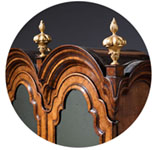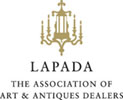17th Century William and Mary Olive Oyster Cushion Mirror
Circa 1690 England
SOLD
Request Information
Follow Us
17th Century William and Mary Olive Oyster Cushion Mirror
Further reading –
Oystering or oyster veneer is a form of veneering, a type of parquetry. This technique requires thin slices of wood branches or roots cut in cross-section, usually from small branches of walnut, olive, kingwood and less commonly laburnum, yew and cocus. The resulting circular or oval pieces of veneer are laid side by side in furniture to produce various decorative patterns.
Because the shape formed resembles an oyster shell the technique acquired the name of ‘oyster veneering’. It is purported that the technique was first developed by English cabinet-makers in the 1660s, immediately after the Restoration of the monarchy, first being used on furniture such as the cocuswood cabinet on stand which bears the cipher of Queen Henrietta Maria (circa 1660) but I believe the technique most likely came from the Huguenot cabinet makers.
Condition
Provenance
Literature
Dimensions
PREVIOUSLY SOLD

English 18th Century Chippendale George III Gilt Brass Rococo Hall Lantern
English 18th Century Chippendale George III Gilt Brass Rococo Hall Lantern Sold Follow UsEnglish 18th Century Chippendale George III Gilt Brass Rococo Hall Lantern A superb and original late 18th century George III rococo large gilt brass...
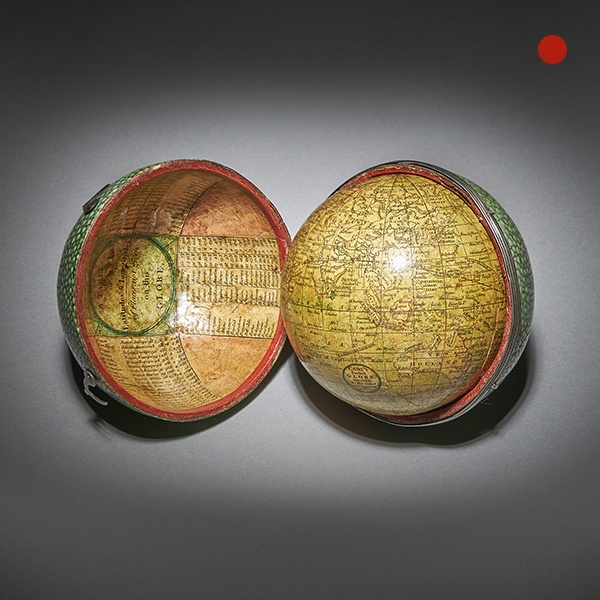
Fine 18th Century English Terrestrial Pocket Globe by Cary, London, 1791
Fine 18th Century English Terrestrial Pocket Globe by Cary, London, 1791 Sold Follow UsFine 18th Century English Terrestrial Pocket Globe by Cary, London, 1791 Cary’s Pocket globe, agreeable to the latest discoveries, London: J&W Cary,...
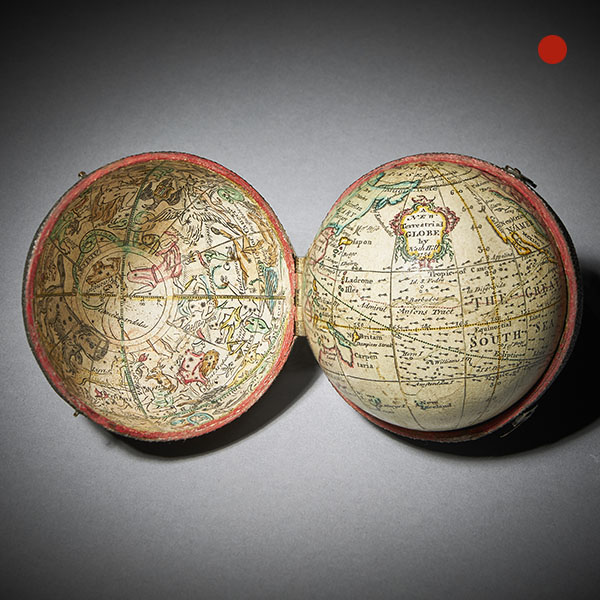
Fine English Celestial Pocket Globe by Nathaniel Hill
Fine 18th Century English Celestial Pocket Globe by Nathaniel Hill, London, 1754 Sold Follow UsFine 18th Century English Celestial Pocket Globe by Nathaniel Hill, London, 1754 A fine and rare 18th century English terrestrial and celestial...

English 18th Century Chippendale George III Gilt Brass Rococo Hall Lantern
English 18th Century Chippendale George III Gilt Brass Rococo Hall Lantern Sold Follow UsEnglish 18th Century Chippendale George III Gilt Brass Rococo Hall Lantern A superb and original late 18th century George III rococo large gilt brass...

Fine 18th Century English Terrestrial Pocket Globe by Cary, London, 1791
Fine 18th Century English Terrestrial Pocket Globe by Cary, London, 1791 Sold Follow UsFine 18th Century English Terrestrial Pocket Globe by Cary, London, 1791 Cary’s Pocket globe, agreeable to the latest discoveries, London: J&W Cary,...

Fine English Celestial Pocket Globe by Nathaniel Hill
Fine 18th Century English Celestial Pocket Globe by Nathaniel Hill, London, 1754 Sold Follow UsFine 18th Century English Celestial Pocket Globe by Nathaniel Hill, London, 1754 A fine and rare 18th century English terrestrial and celestial...
YOU MAY ALSO LIKE
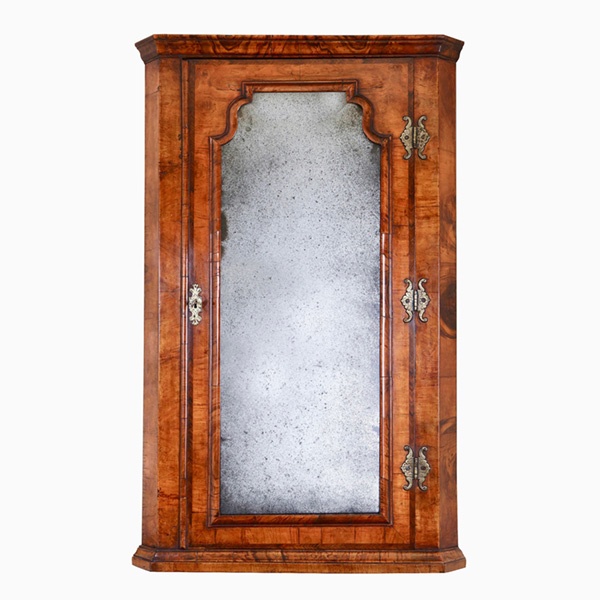
Queen Anne Walnut Corner Cupboard with Bevelled Mirror Plate
A truly remarkable find in original condition. To the door a shaped soft bevelled mirror plate is framed by a cross-grain molding of typical queen Anne design which is further cross-banded, feather-banded and edged to the opening with a single de-molding.

Queen Anne Walnut Corner Cupboard with Bevelled Mirror Plate
A truly remarkable find in original condition. To the door a shaped soft bevelled mirror plate is framed by a cross-grain molding of typical queen Anne design which is further cross-banded, feather-banded and edged to the opening with a single de-molding.
